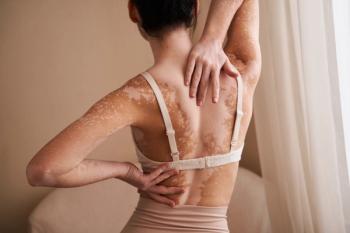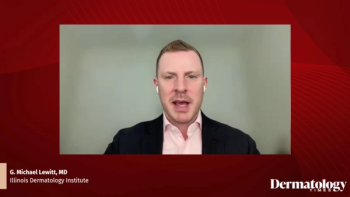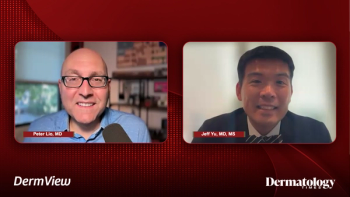
Current Treatment Options in Vitiligo
Nada Elbuluk, MD, and David Rosmarin, MD, review treatments in vitiligo, including corticosteroids and phototherapy.
Episodes in this series

David Rosmarin, MD: The first thing I do when I see a patient is assess whether the vitiligo is progressive or stable. If it’s progressive, I’m often opting for oral steroids or phototherapy. How about yourself?
Nada Elbuluk, MD: I look at it similarly. Are they stable or unstable? Does it look like it’s segmental or nonsegmental? If they’ve had it for a while, you can call it segmental for sure. If it’s my first time meeting them, I’ll say, “This is new onset. We’ll have to watch and see if this is localized or segmental, or if it’s going to become generalized.” Once I can categorize them, I also try to look at percentage of body surface area. Then I ask them about what’s bothering them.
Back to that question of treatment goals and what they want to do. I get into the conversation about the different categories of treatments for patients and break down for them that combination therapy is usually the best. I have a lot of patients who come in, who’ve previously tried 1 thing for 4 to 6 weeks. And trying a topical cream for a short time alone is not often enough. That doesn’t mean that they’ve failed the therapy. Because they’ll often come in and say, “I already did this.” But they didn’t do it long enough. Same with phototherapy. You can’t do phototherapy for just a month to know if it’s working. I prep them for the time frame of commitment. As you said, it takes at least 30 sessions or more to even know if it’s working. That’s just the beginning.
I love phototherapy if I can get the patients to do it and fit it into their lifestyle. Even if they can just do twice a week. I’ve even had a few patients who could do it only once a week. I tell them, “It’s going to take a lot longer.” But I love phototherapy if we can include it. Because we know it’s effective. We know it’s safe. Then I talk to them about the different categories of topical creams and using those with phototherapy. I agree with you about using steroids to stabilize the disease. I tell patients that there are basically 2 goals if they want to pursue treatment. One is disease stabilization, which is getting the disease to stop spreading. The second goal is repigmentation, which gets the color back in the areas where they’ve lost it. That’s helpful for people to understand. Sometimes, at the first follow-up, you might be seeing more stabilization than repigmentation. You have to explain that that goal is being reached in the process. They usually feel encouraged by that.
In addition, I’ll talk to them about the role of antioxidants and diet. People often have a lot of questions about that. Some of them have already gone on gluten-free diets or tried different types of measures—cutting out sugar, dairy, or random things that they feel are implicated in their vitiligo. We talk about how there are some data, but it’s limited when it comes to that area. Many times people have questions about procedural things they can do. I explain that there’s a surgical option for vitiligo, but it’s reserved for a unique subset of people. It works best with segmental. But if it’s done in a nonsegmental vitiligo patient, it has to be someone who has stable disease that’s not spreading. It’s meant for smaller surface areas. It’s a detailed conversation in that first visit, when you’re giving them the gamut of treatment options and what’s involved should they choose that.
David Rosmarin, MD: You well-summarized that into buckets of treatment, whether it’s some of our orals, phototherapy, procedures, and topicals, which we often consider our first-line agents, or even depigmentary options or supplements. I find it interesting that you mentioned that some of the patients do phototherapy once a week. The data do show the final results, and the degree of repigmentation is more reflective of the cumulative number of sessions rather than the frequency of sessions for phototherapy that people do.
Transcript edited for clarity
Newsletter
Like what you’re reading? Subscribe to Dermatology Times for weekly updates on therapies, innovations, and real-world practice tips.


















